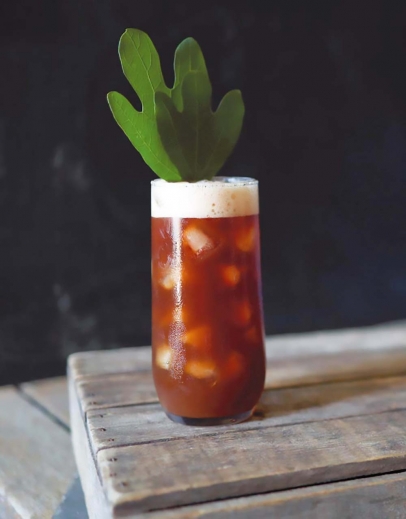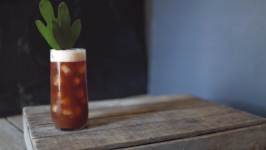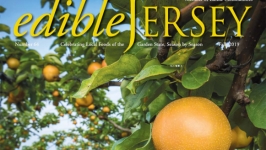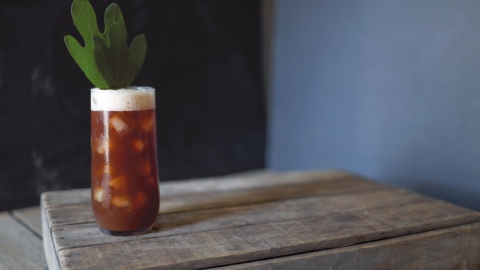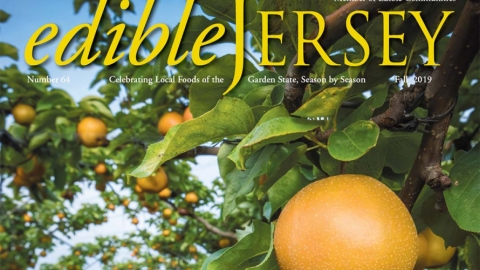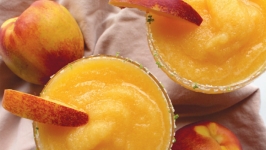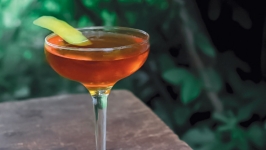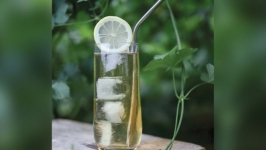ROOT BEER BARREL
It was here in New Jersey where sassafras was transformed from a folk food and medicine into a commercial drink marketed to the masses. In the 1800s, Charles Hires, a business-savvy Quaker pharmacist from Salem County, cashed in on the budding American soda business with sassafras root beer.
You’ve likely heard of sassafras but know little about it. It’s hard to imagine that not long ago, the sassafras plant was one of the most coveted plants in the U.S. and the nation’s second-highest export after tobacco. However, sassafras experienced a meteoric fall from grace fueled by the nation’s drug paranoia in the 1950s, all but erasing it from the public eye. Around that time, it was discovered that sassafras contained a chemical called safrole, which could be manipulated to form the hallucinogenic drug MDMA. Studies were performed where extremely high levels of safrole were injected into lab rats for an extended period of time. The rats grew tumors, and while this was never found to be the case with humans, and despite the fact that safrole is present in other spice cabinet-staples including basil, nutmeg, and cinnamon, the FDA labeled safrole as carcinogenic in 1960 and subsequently banned the use of sassafras in commercially sold foods, drinks, and drugs.
Prior to this, however, the plant was an integral part of the ethnobotanical fabric of this country. Native Americans throughout the Eastern U.S. taught early European settlers the many ways in which they used this plant in day-today life. Sassafras was actually revered by both groups as a cure-all, said to do everything from dissolving kidney stones to reversing old age. Culinary uses included boiling the roots to make tea and adding the ground leaves to thicken stews, a practice still used today in traditional Louisiana gumbo.
However, it was right here in New Jersey where sassafras was transformed from a folk food and medicine into a commercial drink marketed to the masses. In the 1800s, Charles Hires, a business-savvy Quaker pharmacist from Salem County, decided to cash in on the budding American soda business and the then-centuries-long sassafras craze in the U.S. He traveled to the Centennial Exposition in Philadelphia in 1876 and unveiled his sassafras root beer, a nonalcoholic temperance drink which he marketed as “the greatest health-giving beverage in the world.” The rest, as they say, is history.
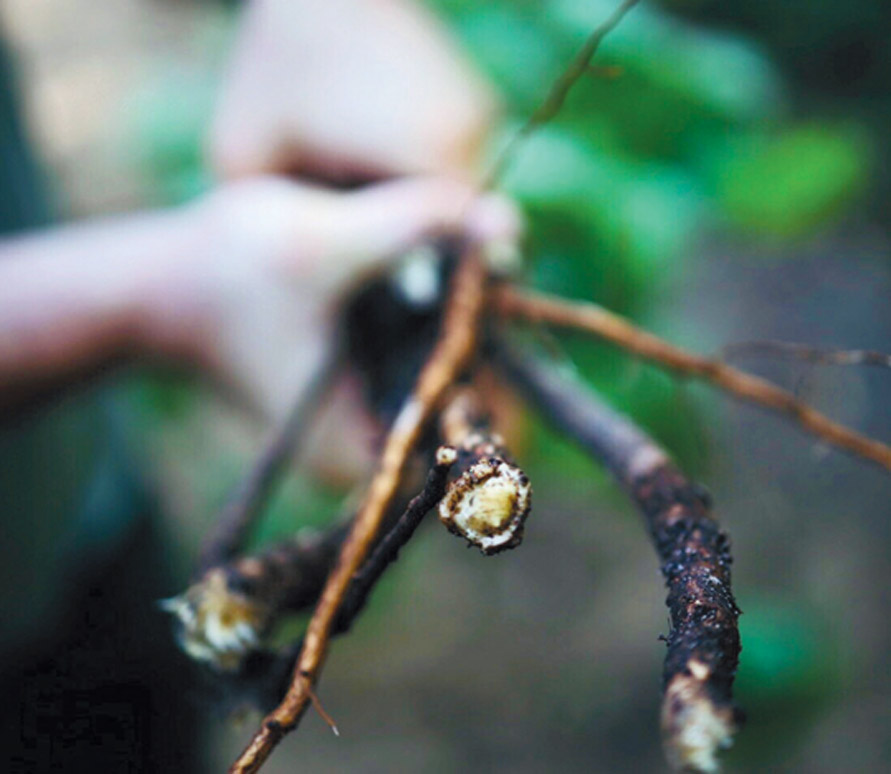
When I heard about this a few years ago, I started to research the topic. The more I read, the more I was convinced that moderate consumption of sassafras soda was no more dangerous than eating food that’s been cooked over charcoal. One estimate I came across was that you would have to drink approximately 24 gallons of root beer per day for an extended period of time to ingest the level of safrole given to rats in the lab. Taking all of this into consideration, I decided that I wanted to try my hand at making my own root beer.
First I had to find sassafras. One day at the dog park, I noticed a grove of saplings that had the telltale mitten-shaped sassafras leaf. I bent down and grabbed one by the base, pulled it up with all my might to unearth the tuber, and the air filled with the smell of root beer. I continued doing so until I had a good haul, and when I got home I scrubbed all the dirt off the roots and used them to brew a tea, the first step of making root beer. If foraging sassafras seems like a daunting task, you can easily find sassafras for sale online.
The final product was better than I could have ever hoped. It had a creamy sudsiness, a lingering herbaceousness and an earthy flavor resulting from the fermentation. When contemplating a sassafras cocktail, I knew I wanted to amplify the spice notes, so I used Jersey’s All Points West Whiskey, an Italian amaro known as Ramazotti, and a splash of red wine as a nod to the Spanish Kalimotxo apéritif.
A few months later, my great-uncle tried the drink and told me how my great-great-grandfather made his own sassafras root beer the same way. My ancestor sent all the grandkids out into the woods near the house to collect the roots for him. It was a surreal feeling finding out that in rediscovering a culinary practice from this region, I was resurrecting an old tradition from my own family.


